I've been trying to make an image classifier base on this tutorial
I have changed a few things in it, which I didn't think would completely break the learning pattern but they did... The accuracy calculations are consistently about as good as random guesses, with no upward curve, not even a slow one.
As you could see in the code, the only major changes I made was using my own data-set instead of the MNIST data-set, and my data is pictures of characters of 89 classes, not just 10. I apply random noise and distortions before batching them to the trainer, and I have about 100,000 examples of each of the 89 classes.
I have commented next to the only changed lines to help you read the changes
Code (python):
def model(features, labels, mode):
#Change from the tutorial - 36*36 images instead of 28*28
input_layer = tf.reshape(features, [-1, 36, 36, 1])
conv1 = tf.layers.conv2d(inputs=input_layer, filters=32, kernel_size=[5, 5], padding='same', activation=tf.nn.relu)
pool1 = tf.layers.max_pooling2d(inputs=conv1, pool_size=[2, 2], strides=2)
conv2 = tf.layers.conv2d(inputs=pool1, filters=64, kernel_size=[5, 5], padding="same", activation=tf.nn.relu)
pool2 = tf.layers.max_pooling2d(inputs=conv2, pool_size=[2, 2], strides=2)
# Change From the tutorial - 9*9*64 instead of 7*7*64 to match different image size
pool2_flat = tf.reshape(pool2, [-1, 9 * 9 * 64])
dense = tf.layers.dense(inputs=pool2_flat, units=1024, activation=tf.nn.relu)
dropout = tf.layers.dropout(inputs=dense, rate=0.4, training=mode == learn.ModeKeys.TRAIN)
# Change from tutorial = 89 classes instead of 10
logits = tf.layers.dense(inputs=dropout, units=89)
onehot_labels = tf.one_hot(indices=tf.cast(labels, tf.int32), depth=89)
loss = tf.losses.softmax_cross_entropy(onehot_labels=onehot_labels, logits=logits)
train_op = tf.contrib.layers.optimize_loss(
loss=loss,
global_step=tf.contrib.framework.get_global_step(),
learning_rate=0.001,
optimizer='SGD'
)
# Generate Predictions
predictions = {
"classes": tf.argmax(input=logits, axis=1),
"probabilities": tf.nn.softmax(logits, name="softmax_tensor")
}
return model_fn.ModelFnOps(mode=mode, predictions=predictions, loss=loss, train_op=train_op)
I thought that the network parameters are maybe to small to handle 36*36 pictures and 89 classes, so I tried giving the conv layers more features, or increase the dense layer nodes, but nothing seems to change. The only results in tensorboard I see are of 1%-1.5% accuracy, which fit well with random guesses on 89 classes.
I'm a real newbie in tensorflow and machine learning so please be gentle with me, and tell me please what i'm doing wrong.
Edit: Training code:
def train(batch_size, steps):
config = get_config()
config.mode = 'train' # just for the example
# Generate training data
if config.mode == learn.ModeKeys.TRAIN:
x, y = generate(batch_size * steps)
print(y) # prints correct labels in range 0-89
logging_hook = tf.train.LoggingTensorHook(tensors={"Probabilities": "softmax_tensor"}, every_n_iter=50)
char_classifier = learn.Estimator(model_fn=model, model_dir=mydir)
# Train!
if config.mode == learn.ModeKeys.TRAIN: #assume this is always true in the example here
char_classifier.fit(x=x, y=y, batch_size=batch_size, steps=steps, monitors=[logging_hook])
accuracy = learn.MetricSpec(metric_fn=tf.metrics.accuracy, prediction_key="classes")
# Evaluate!
x, y = generate(1000)
eval_results = char_classifier.evaluate(x=x, y=y, metrics={'accuracy':accuracy})


